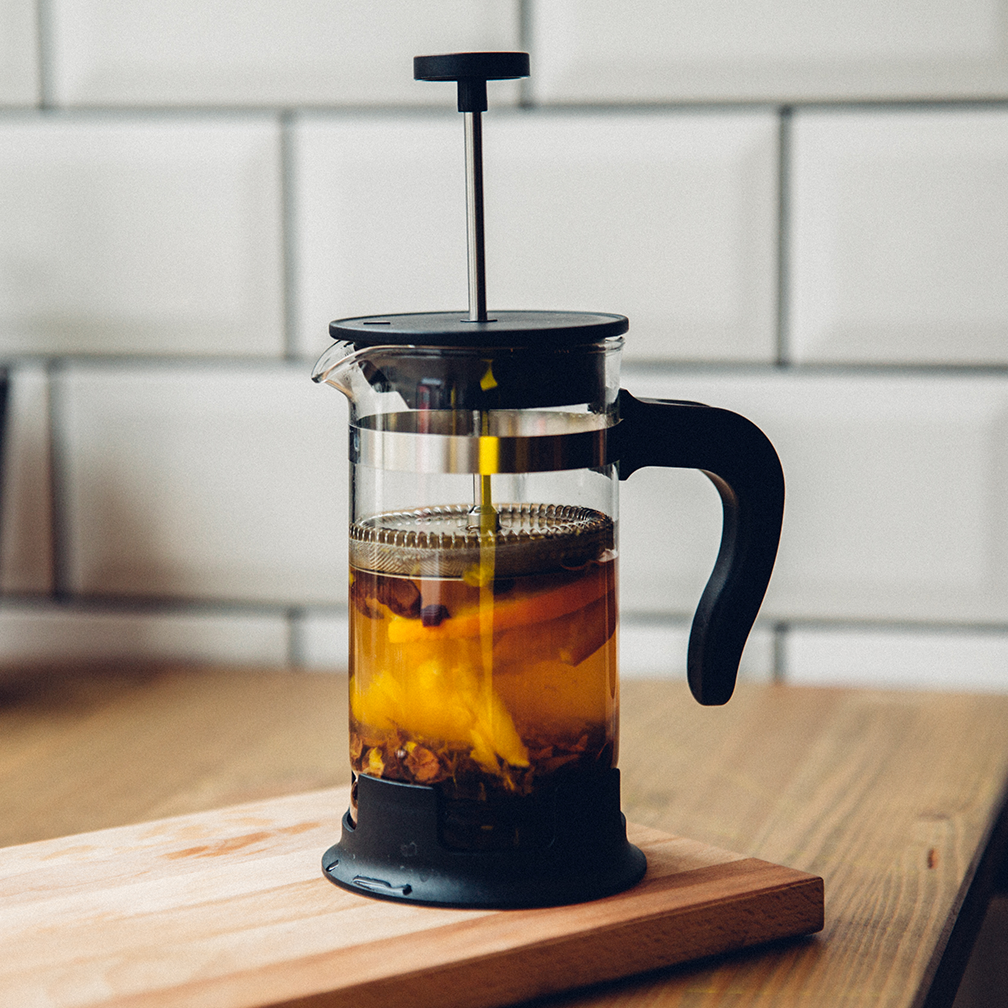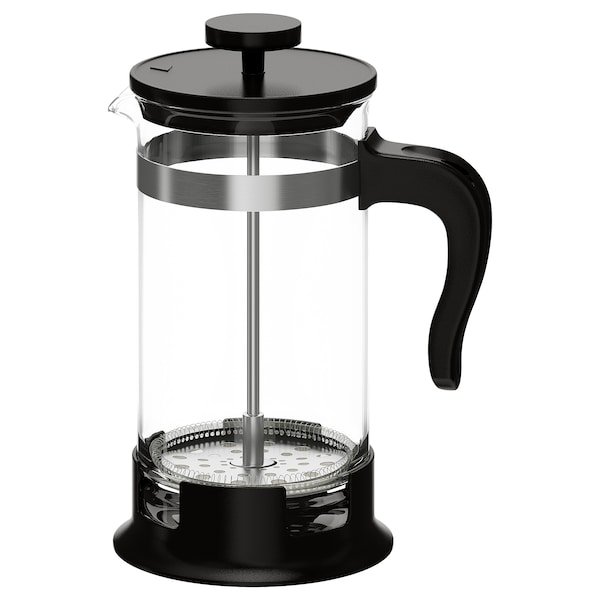When it comes to brewing a rich and flavorful cup of coffee, a French press coffee maker is a must-have tool in every coffee lover’s kitchen. This elegant and simple device, also known as a press pot or plunger pot, allows you to extract the true essence of your coffee beans, resulting in a delicious and aromatic brew. By immersing the coffee grounds in hot water and using a plunger to separate them from the liquid, a French press enables you to enjoy a full-bodied and bold cup of coffee. If you’re curious to learn more about this classic coffee-making method, keep reading to discover the ins and outs of a French press coffee maker. A French press coffee maker is a popular brewing device that allows you to make a rich and flavorful cup of coffee. It consists of a cylindrical glass or stainless steel beaker, a plunger with a mesh filter, and a lid. The process involves steeping fresh coffee grounds in hot water and then using the plunger to separate the grounds from the liquid. This method of brewing coffee has gained popularity over the years due to its simplicity and ability to extract the full flavor of the beans.

History
The French press coffee maker has a rich history that dates back to the 19th century. Its origin can be traced to France, hence the name “French press.” However, the exact timeline and inventor of this device are still a topic of debate among coffee enthusiasts. Some believe that the first design similar to the modern French press was patented by a Frenchman named Attilio Calimani in 1929. Others claim that an Italian designer named Luigi di Ponti created a similar device in the early 1900s. Regardless of its true origins, the French press has become a beloved tool for coffee brewing worldwide.
Design
The French press coffee maker consists of several key components that work together to produce a delicious cup of coffee. The beaker, usually made of glass or stainless steel, holds the coffee grounds and hot water during the steeping process. The plunger, equipped with a mesh filter, is used to separate the grounds from the liquid. The lid, which is often attached to the plunger, helps retain heat and prevent any accidental spills. The simple yet effective design of the French press makes it a versatile and user-friendly brewing device.
Materials
French press coffee makers are available in various materials, each offering its own benefits and aesthetics. Glass is a popular choice as it allows you to see the brewing process and monitor the coffee’s strength. However, glass can be fragile and may require careful handling. Stainless steel French presses are more durable and retain heat better, making them ideal for traveling or outdoor use. Additionally, some models feature a combination of glass and stainless steel, offering the best of both worlds.
Size
French press coffee makers come in different sizes to cater to various brewing needs. The capacity of a French press is typically measured in ounces, ranging from single-serve (around 12 ounces) to larger models (32 ounces and above). The size you choose depends on how many cups of coffee you plan to brew at a time and whether you prefer having leftovers for later. It’s important to consider your daily coffee consumption and the number of people you typically serve when selecting the right size for your French press.

How It Works
The French press brewing process is relatively straightforward, making it an attractive option for coffee lovers. Firstly, you add coarsely ground coffee into the beaker, using a ratio of one tablespoon per four ounces of water as a general guideline. Then, you pour hot water over the grounds, ensuring they are evenly saturated. The coffee needs to steep for about 4 minutes, allowing the flavors to infuse. Afterward, you press the plunger down slowly, separating the brewed coffee from the grounds. The result is a rich, full-bodied cup of coffee that captures the essence of the beans.
Advantages
One of the main advantages of using a French press coffee maker is the full-bodied flavor it produces. The mesh filter allows the coffee oils and fine particles to pass through, resulting in a rich and robust cup of coffee. Additionally, the strength of the coffee can be easily customized to your preference by adjusting the coffee-to-water ratio and steeping time. This level of control allows you to tailor each cup of coffee to your desired taste. Another advantage of a French press is its portability. Its compact size and lack of reliance on electricity make it a perfect brewing device for camping trips, vacations, or even your office desk.

Disadvantages
Despite its many advantages, the French press coffee maker does have some drawbacks. One common issue is sediment in the coffee. Since the brewed coffee is not filtered through paper or a permanent filter, some fine grounds may find their way into your cup. This can result in a slightly gritty texture that some drinkers may find undesirable. Additionally, the French press requires manual operation, which means you need to be actively involved in the brewing process. If you prefer a hands-off approach or are looking for a quick brewing method, a French press may not be the most suitable option.
Maintenance
To ensure the longevity and optimal performance of your French press coffee maker, regular maintenance is essential. Cleaning the French press after each use is crucial to prevent any residual coffee oils from tainting future brews. Disassemble the plunger, remove the filter, and rinse all parts with warm water. It’s crucial to pay extra attention to the mesh filter, as this is where coffee oils can accumulate. You can use a gentle brush or sponge to remove any stubborn residue. Additionally, over time, the mesh filter may become worn or bent. If you notice a decrease in filtration efficiency, it’s advisable to replace the filter to maintain the best possible brew.

Choosing the Right French Press
When selecting a French press coffee maker, there are a few key factors to consider. Capacity is an important aspect, as it determines how many cups of coffee you can brew at once. If you typically brew for one or two people, a smaller capacity French press will suffice. However, if you often entertain guests or need larger quantities, opt for a larger model. Another consideration is the type of filter. The two main options are stainless steel mesh filters and nylon or polyester filters. Stainless steel provides better durability but may allow more sediment to pass through, while nylon or polyester filters provide a cleaner cup of coffee but may need to be replaced over time. Price range is also a consideration, as French press coffee makers can range from budget-friendly options to more premium models with added features.
Making Coffee with a French Press
To make the perfect cup of coffee with a French press, you need to pay attention to a few key steps. Firstly, ensure you have freshly roasted coffee beans and grind them to a coarse consistency. This coarse grind allows for optimal extraction and reduces the chance of over-extraction, resulting in bitterness. Measure the coffee grounds according to the desired coffee-to-water ratio and add them to the beaker. Heat water to the ideal brewing temperature (around 195-205°F) and gradually pour it over the grounds, making sure they are evenly saturated. The bloom phase, which involves letting the coffee grounds steep for about 30 seconds before adding the remaining water, helps release the coffee’s flavors. After the recommended steeping time, gently press the plunger down, separating the brewed coffee from the grounds. Pour your coffee into a cup or a carafe to enjoy the full-bodied flavor of a French press brew.

Troubleshooting
If you encounter any issues while using a French press coffee maker, there are a few common troubleshooting steps you can take. Weak coffee can be a result of not using enough coffee grounds or not steeping for long enough. Adjusting the coffee-to-water ratio and increasing the steeping time can help achieve a stronger cup. Excessive sediment in your coffee can be minimized by using a coarser grind or opting for a French press with a finer mesh filter. If you experience leaks during the pressing process, ensure that the filter is properly aligned and that the plunger and beaker are tightly assembled. Taking these troubleshooting steps can help you troubleshoot and resolve any brewing issues you may encounter.
Alternatives to French Press
While the French press is a popular and widely loved brewing method, it may not be the best choice for everyone. If you prefer a cleaner cup of coffee with minimal sediment, a drip coffee maker with a paper or permanent filter may be more suitable. Drip coffee makers are often programmable and convenient for those who prefer a hands-off approach to brewing. Alternatively, if you enjoy the concentrated flavors and velvety texture of espresso, an espresso machine may be your preferred option. Espresso machines use high pressure to extract the essence of the coffee, resulting in a strong and flavorful shot. Lastly, the pour-over method offers a manual and precise brewing technique. By pouring hot water over a filter-filled with coffee grounds, you can achieve a clean and well-balanced cup of coffee. It’s important to explore these alternatives to find the brewing method that best suits your coffee preferences.
